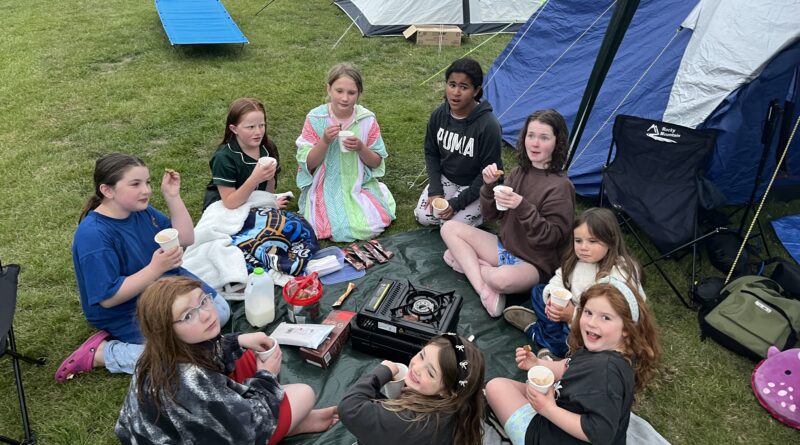Using Suzuki Music Ideas to Help Every Student Succeed in School
- Dr Shinichi Suzuki
In this article, Shin’ichi Suzuki explains how the same ideas used in Suzuki music teaching—like repetition, encouragement, and small, careful steps—can also support learning in school subjects such as maths and language. He shares examples from classroom experiments and encourages teachers to focus on helping each child progress at their own pace. The approach is consistent, supportive, and based on the belief that every child can grow.
I would like this simple method by which every child develops, the method of a perfect score for everyone, to be tried in the first three years of elementary school. This year I have resolved to appeal to school teachers for the sake of children’s happiness.
For an initial experiment, math and language will do. I would like you to apply in these two subjects the method by which every student can easily achieve a full score.
A Proven Classroom Experiment
The same experiment was conducted forty years ago with the approval of Shigeru Kamijoh, principal of Hongoh Elementary School, Asama, in the suburbs of Matsumoto. Shigeki Tanaka taught his class of forty students by the full-score-for-everyone method. The forty students developed beautifully in three years, everyone achieving full scores. Unfortunately, Principal Kamijoh passed away at the end of the third year. Due to the new principal’s lack of understanding, the forty children were divided into four other classes, and the experiment in the full score training method concluded. It is a fact, however, that all forty children in the Tanaka class developed, through the three year training, as students with the ability to achieve full scores.
The Origin of the Full Score Approach
This full score training method is based on the principle of ability development which I discovered over fifty years ago through my study of the mother tongue method by which children throughout the world develop with outstanding ability. This is an Important educational issue. Wishing to let you know the principle of every child’s development, I have decided to take this opportunity to explain my full score training method.
Twenty-five years ago when I first visited the States, in visits to twenty colleges I repeated to psychology professors: “No baby is born with inborn talent; babies are born as white paper, and ability develops in them in diverse ways depending upon all the stimulation from the daily environment.” I visited the States five years in a row, presenting this view for their examination. Whether or not I contributed to it, American psychology has been changing for the past twenty years, inclining to accept the theory that “babies are born as white paper, and develop while acquiring ability through external stimulation.” My recent visits to the States have been graced by the attendance in seminars of forty to fifty American psychologists from various areas.
My Psychology – Law of Ability
Life and How It Works
All babies, born with wonderful life, have equal potential throughout the world. A baby begins his activity on the day he receives life inside the mother’s body, and grows while gradually absorbing everything that is there in the interaction with her feeling, heart, and her life itself.
Therefore, at the time of birth babies have already developed different abilities under maternal influence.
Since long ago I have repeated that “man is a child of the environment” Traditional psychological theories have held that each newborn has different propensities through heredity: some are born with musical traits, others with literary inclinations. Personality and talent have also been considered in ate. Looking at the result of the development of abilities in a child, people judged that this child has a gift, or has none, ascribing it to the issue of inborn heredity. This was the commonsense from long ago.
I discovered over fifty years ago that this theory was flawed. Heredity, I found, determines all the physical conditions of the baby inherited from the parents.
However, there is no heredity as far as ability is concerned. As the baby develops physically through the wonderful workings of life, he also acquires every ability through the very workings of life.
Therefore, there is no such thing as a born genius.
We can easily raise a Beethoven or a Mozart as a terrible tone-deaf person depending on how we raise him from birth. For example, if we record terribly tone-deaf music and play the tape every day for them, both will eventually become terribly tone-deaf. It is the same as when an Osaka resident raises American babies in Osaka; everyone of them will easily learn to speak fine Osaka dialect.
Every child grows; everything depends upon how he is raised.
When I came to know this principle, I began early education in violin for the first time in Tokyo over fifty years ago. One of my earliest students, Koji Toyoda, constantly listened to the world class recordings of Kreisler at home and practiced with records of international maestros as his teachers, continuing to develop superior sensibility and skills until nineteen.
Now he is one of the three violin professors in the world famous conservatory of Berlin.
Please realize that every child is a wonderful being endowed with wonderful workings of life and capable of developing. Small children who studied with Koji, including Toshiya Eto, Takeshi Kobayashi, Kenji Kobayashi, Hidetaro Suzuki, Takaya Urakawa and others, later actively taught in music schools in the States or in Europe.
Japanese performers are also playing in orchestras throughout the world, not because of heredity but because of the outstanding skills and superior musical sensibility they developed.
How to Teach with the Full Score Method
Next let me explain the educational method for successfully fostering children’s ability. This is the principle by which every child grows.
The full score approach is the expression I use for the method of ability development. Take elementary math or language for example. Starting with the easiest material introduced at the beginning, teach first graders in such a way that every student can handle it well. Teach the same material repeatedly every day till it is mastered. By this process, the material becomes easier and easier, and the students begin to advance faster. Thorough training is what creates ability.
Then advance the students to the next level, and daily train them thoroughly in both the former and the new levels. This is full score training, an approach which produces no dropouts. Gradually add newer materials letting students master them. This is the same as the initial stages of ability development in language by which every child learns to speak the mother tongue fluently. A baby’s progress is slow at the beginning. Starting with “yum yum” which the baby repeats every day, he goes through repeated training. As ability develops, more words are added, and he acquires more ability. Every child progresses gradually, gaining in learning speed. In the same way, whether in math or written language, it is important to take time to develop students’ ability, training them by the full score method to develop ability. If this is done, every child develops without fail.
I would like to ask teachers to observe the wonderful development of speech in children, understand the principle of how life itself acquires ability, and practice the full-score-for-everyone training method. Have faith in the greatness of life, in the fact that there is no child who is no good and that every child can develop without fail.
In music education, out of my faith in the greatness of life I have, for over fifty years, accepted children without screening. I have fostered every one of them as a violin student with superior sensibility and skills. They developed by the same full score approach as in the mother tongue training. Hiroyuki Takahashi, a brain injured boy who started at age three, has developednthrough violin study and graduated this year at eighteen from the high school division of a special school. He has acquired the superior ability to play the Tchaikovsky violin concerto with a fine musical sense.
Ability is determined by the way the child is raised. It is an issue of the workings of life.
Of traditional approaches in elementary education, the worst is the way of advancing in teaching materials: teach, advance, teach, advance. Starting out with first graders, teachers teach to a certain level in the first term, to another level in the second term, then a test is given to determine students’ degrees of achievement. This is an educational method for creating dropouts. Look at the word education, kyoiku, which consists of kyo, to teach, and iku, to foster. I think it means to teach and foster ability.
When you have taught, the student has not yet acquired ability. You have to train the student fully, using the same material, and help him develop ability.
Gradual Progress Builds Real Learning
In language, a child masters words through repeatedly using them, then adds more words which he masters likewise. This way his ability is gradually heightened.
Whether in spoken or written language, or in math, if you teach the first material, finish it, then teach new material, thus advancing the student from material to material, the student will be a perfect dropout. In speech, gradual increase of vocabulary occurs hand in hand with mastery of what has been learned. This is how to foster ability.
A Call to Action for Teachers Around the World
Let me ask you to practice from the beginning of the first grade the ability development approach, or the full score method, which promises proper progress. Every student can learn without fail. In language, play a testing game to see if by the time the first book is finished every student can recite it from cover to cover, with the book closed. I would also like you to create the ability in every child to write out without an error any lesson requested by the teacher, also with the book closed. Try this son of thing at the end of the first semester, and perhaps at the end of the second semester, and you will find it an effective and enjoyable method.
If you experiment with the full score training method in math and language for all students of the first three grades, children will benefit.
Every child has that potential. The full score method already stood the test when implemented at Hongoh Elementary School in a class of forty students. I am convinced that it will prove successful again. At the outset of the Hongoh experiment, one of the children, at age six, did not even understand the concept of three. Instruction took place with this child as the focus of attention, and he, too, achieved fine development through the full score training approach.
Let me ask elementary school teachers to carry out this full-score-for-everyone method, an innovative movement schools throughout the world. It is an education of love for the sake of children.
At present over 300,000 children in 39 countries are studying violin, piano, and so forth by the Suzuki method. If experiments for the first three grades are conducted, I would like to invite elementary school teachers from these 39 countries and spread an educational movement of the full score training method.
Final Words of Gratitude and Hope
I wish to express my deep felt respect and gratitude toward elementary school teachers for their love of children and their worthy task. I am also making efforts for the happiness of children throughout the world.
Let me again ask you to try this for the sake of children throughout the world, for the sake of a new world. (November 1988, the fall of my ninetieth year)
Shin’ichi Suzuki
Reproduced from “A perfect score for everyone” Talent Education Journal #33 1989


